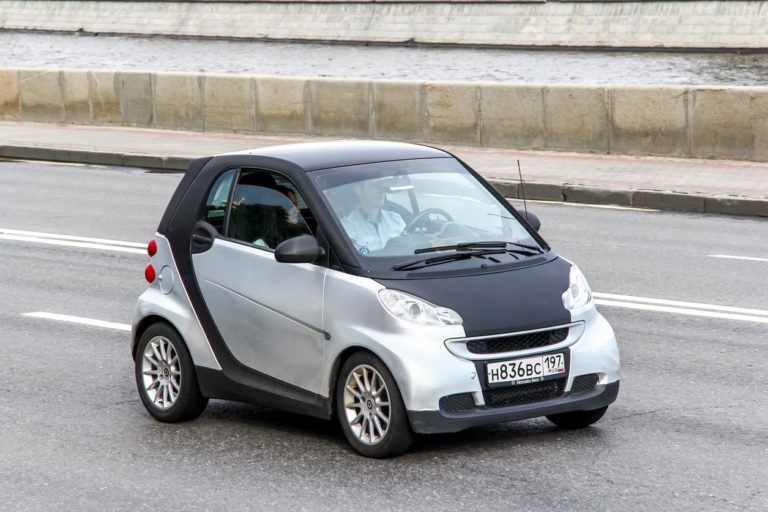The Smart Car has a safety rating that is considered to be average by industry standards. Nonetheless, it is important to note that safety ratings can vary depending on the specific model and year of production.
When considering purchasing a Smart Car, it is advisable to research the safety ratings of the specific model and year in question, and to also take into account other safety features and technologies that may be available. Safety should always be a top priority when choosing a vehicle, and it is recommended to consult with experts and conduct thorough research before making a final decision.
Table of Contents
- 1 Why Smart Car Safety Ratings Matter
- 2 Factors Considered In Smart Car Safety Ratings
- 3 The Role Of Government And Independent Organizations
- 4 Exploring Different Safety Rating Systems
- 5 How Crashworthiness Ratings Influence Vehicle Safety
- 6 Evaluating Crash Avoidance And Mitigation Technology
- 7 Importance Of Child Safety Features In Smart Cars
- 8 Evaluating Safety Assist Technologies
- 9 Analyzing Vehicle Structure And Design
- 10 Conclusion
Why Smart Car Safety Ratings Matter
Smart car safety ratings are an integral aspect to consider when choosing a vehicle. Prioritizing safety should be of utmost importance, as it plays a vital role in ensuring protection on the road. Understanding the impact of safety ratings can help you make an informed decision. These ratings assess a vehicle’s crashworthiness and how well it protects occupants in the event of a collision. They consider factors such as crash tests, structural integrity, and safety features. The safety rating of a smart car directly influences insurance premiums. Cars with higher safety ratings tend to have lower insurance costs. By selecting a vehicle with a good safety rating, you not only safeguard yourself and your passengers but also potentially save on insurance expenses.
Factors Considered In Smart Car Safety Ratings
Factors considered in smart car safety ratings include crashworthiness and occupant protection, crash avoidance and mitigation technology, child safety features, evaluation of safety assist technologies, and analysis of vehicle structure and design. Crashworthiness and occupant protection refer to the ability of a car to protect its occupants in the event of a crash. This includes features such as advanced airbags, seatbelts, and reinforced structures. Crash avoidance and mitigation technology focuses on systems that help prevent accidents or reduce their severity, such as automatic emergency braking and lane departure warning. Child safety features assess the presence and effectiveness of safety features specifically designed to protect children, such as child seat anchor points and rear door child locks. Safety assist technologies, on the other hand, evaluate systems that aid the driver in dangerous situations, such as blind-spot monitoring and adaptive cruise control. Lastly, the analysis of vehicle structure and design looks at the overall construction and engineering of the car to assess its resilience and stability in various crash scenarios.
The Role Of Government And Independent Organizations
The Role of Government and Independent Organizations
The safety rating of a smart car is an essential factor that potential buyers consider before making a purchase. Government safety ratings and independent organizations play a crucial role in evaluating and providing accurate information about car safety.
Overview of Government Safety Ratings and Standards
Government bodies such as the National Highway Traffic Safety Administration (NHTSA) and the European New Car Assessment Programme (Euro NCAP) have developed safety ratings and standards to assess smart cars’ safety performance. These ratings and standards cover various aspects of a vehicle’s safety, including crash test results, safety features, and overall occupant protection.
Introduction to Independent Car Safety Assessment Organizations
Independent organizations such as the Insurance Institute for Highway Safety (IIHS) and the European Automobile Manufacturers Association (ACEA) also conduct their own comprehensive safety assessments. These assessments often complement the government ratings and provide additional insights into safety performance.
Collaboration between Government and Independent Organizations in Determining Safety Ratings
The collaboration between government bodies and independent organizations ensures that safety ratings are objective and reliable. They often share data and insights to collectively improve car safety standards.
Importance of Relying on Trusted Sources for Accurate Safety Information
When making car buying decisions, it is crucial to rely on trusted sources for accurate safety information. Government safety ratings and assessments conducted by reputable independent organizations provide valuable insights into a smart car’s safety performance, helping consumers make informed choices and prioritize safety.
Exploring Different Safety Rating Systems
Understanding the criteria and rating scales used by various safety assessment organizations is crucial for ensuring the safety of vehicles, especially when it comes to Smart Car Safety Rating. Government and independent organizations have devised their own safety rating systems, each with its own pros and cons.
| Organizations | Rating Methodologies | Pros | Cons |
|---|---|---|---|
| Government | Based on crash tests, vehicle performance, and safety features. | Recognized and mandated by law, consistent standards. | May have limited scope or outdated criteria. |
| Independent | Relies on crash test data, expert analysis, and safety technology evaluations. | Subjective assessment, covers a wide range of safety aspects. | May vary in methodologies and not legally mandated. |
Comparing these safety ratings can provide a comprehensive understanding of a vehicle’s safety. However, it’s important to remember that no rating system is without limitations. Therefore, it is advisable to consider multiple ratings and consult reliable sources when evaluating the safety of a smart car.
How Crashworthiness Ratings Influence Vehicle Safety
Explanation of crashworthiness and its significance in protecting occupants during a collision:
Crashworthiness refers to a vehicle’s ability to protect its occupants during a collision. It is an essential factor in determining vehicle safety. Crashworthiness ratings are assigned to vehicles based on various factors such as vehicle structure, airbags, and restraints.
Impact of vehicle structure, airbags, and restraints on crashworthiness ratings:
The vehicle structure plays a crucial role in distributing collision forces and minimizing the impact on occupants. In addition, airbags and restraints like seat belts help in reducing the risk of injury by restraining occupants and mitigating the impact of a crash.
Real-life examples illustrating the importance of crashworthiness ratings:
Real-life incidents have shown the significance of crashworthiness ratings in determining vehicle safety. Vehicles with high crashworthiness ratings have proven to provide better protection to occupants during collisions, reducing the risk of severe injuries or fatalities. On the other hand, vehicles with lower crashworthiness ratings may pose higher risks to occupants in the event of a crash.
Evaluating Crash Avoidance And Mitigation Technology
Crash avoidance and mitigation technology plays a crucial role in determining the safety ratings of smart cars. These advanced safety features are designed to prevent accidents and minimize the severity of collisions. Collision warning systems use sensors to detect the distance between vehicles and provide alerts to the driver when there is a potential risk of a crash. Automatic emergency braking is a feature that not only alerts the driver but also applies the brakes automatically to avoid or reduce the impact of a collision. Lane departure warning systems, on the other hand, notify the driver if they unintentionally stray from their lane. With the integration of these technologies, smart cars are becoming safer than ever before. Manufacturers are continuously working towards improving these features to enhance the overall safety of smart cars on the roads.
Importance Of Child Safety Features In Smart Cars
Smart cars are becoming increasingly popular due to their compact size and fuel efficiency. However, when it comes to car safety, it is important to consider child safety features. These features play a crucial role in protecting young passengers and are a key factor in the overall safety rating of a smart car.
Child safety features include child seats, safety belts, and automatic child locks. Child seats provide proper restraint and support for young children, reducing the risk of injury in the event of a collision. Safety belts designed for children ensure a secure fit, preventing them from being thrown about in sudden stops or accidents. Automatic child locks on doors and windows prevent children from inadvertently opening them while the vehicle is in motion.
Safety ratings specific to child occupant protection evaluate how well a smart car protects children in various crash scenarios. These ratings take into account factors such as the effectiveness of child restraints, the structure of the car, and the presence of advanced safety technologies. Smart cars with higher safety ratings for child occupant protection offer peace of mind to parents.
Child safety features significantly contribute to the overall safety rating of a smart car. When manufacturers design and incorporate these features into their vehicles, they prioritize the protection of the youngest passengers. By considering smart cars with favorable safety ratings for child occupant protection, parents can make informed decisions to ensure their children’s safety on the road.
Evaluating Safety Assist Technologies
Safety assist technologies play a crucial role in enhancing the safety of smart cars. One such technology is electronic stability control (ESC), which helps to stabilize the vehicle during sudden maneuvers or loss of control situations by automatically applying the brakes to individual wheels. This not only prevents accidents but also reduces the severity of collisions. Another important safety assist technology is blind-spot detection, which uses sensors to detect vehicles in the driver’s blind spots and alerts them through visual or auditory signals.
These safety assist technologies are assessed in smart car safety ratings through rigorous testing procedures. The evaluation takes into account various factors such as the effectiveness of ESC in maintaining vehicle stability and preventing rollovers, as well as the accuracy and reliability of blind-spot detection systems. These assessments provide consumers with valuable information about the safety capabilities of different smart car models, helping them make informed decisions when purchasing a vehicle.
Analyzing Vehicle Structure And Design
htmlAnalyzing Vehicle Structure and Design:
The significance of vehicle structure and design in ensuring occupant protection cannot be overstated. Key design elements such as crumple zones and reinforced safety cages play a crucial role in enhancing vehicle safety.
Crumple zones, strategically placed in the front and rear of a vehicle, absorb and distribute the impact forces during a collision, thereby reducing the risk of injury to the occupants. By allowing controlled deformation, these zones effectively dissipate energy and minimize the transfer of force to the passenger compartment.
The reinforced safety cages in modern vehicles are designed to withstand impact forces and protect the occupants. These cages, typically made of high-strength materials such as advanced steels or aluminum, provide a strong and rigid structure that helps maintain the integrity of the passenger compartment even under severe crash conditions.
In addition to these design elements, innovative materials and engineering techniques contribute to improving vehicle safety. The use of lightweight yet strong materials, such as carbon fiber composites, helps reduce the weight of the vehicle without compromising on safety. Advanced engineering methods, such as computer simulations and crash tests, enable manufacturers to optimize the design of the vehicle structure for enhanced protection.

Credit: www.nbcnews.com
Conclusion
The safety rating of smart cars is essential to consider when choosing a vehicle. With advanced technology and features designed to protect passengers, these cars offer peace of mind on the road. The safety features, crash test results, and overall rating should be carefully reviewed before making a purchase.
Prioritizing safety ensures a secure and worry-free driving experience. So, whether you’re a city dweller or an eco-friendly enthusiast, a smart car with a high safety rating is a smart choice.
